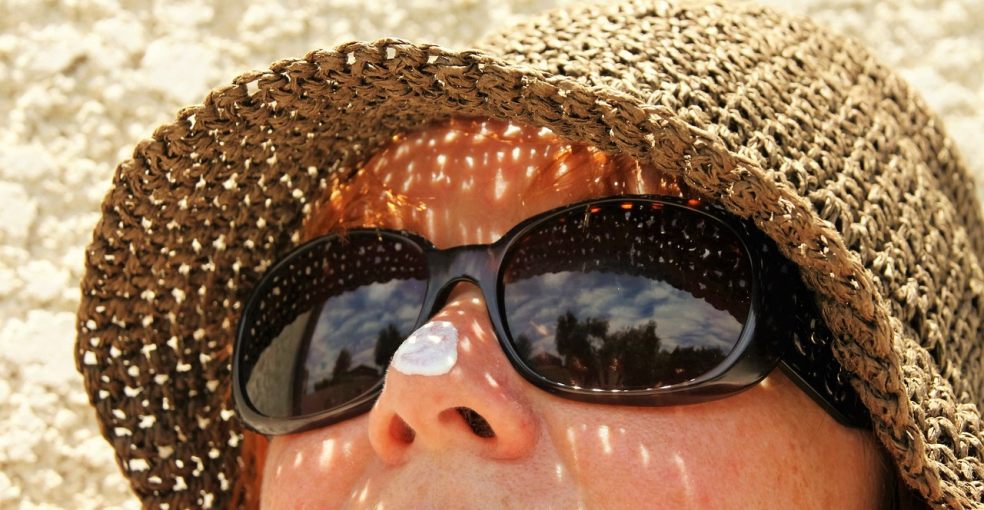
Read On To Find Out The Truth Behind Some Common Myths About Sun Protection
According to Cancer Research UK, a record 20,800 new cases of melanoma will be diagnosed this year by virtue of a growing population and an increase in awareness of prevention and early treatment. If you have a lighter skin tone and type, you have a higher risk of developing skin cancer, which can spread to nearby tissue and other areas in your body if not caught on time. It's not 100 percent preventable. However, you can significantly reduce the risk of illness and early death by limiting your exposure to UV rays from the sun and other sources, such as tanning beds.
There are many myths (and misconceptions) about sun protection. Let's clarify the false beliefs:
#1 You Can't Get Sunburned on Cloudy or Rainy Days
Even if the clouds block some UV light, more than 90 percent of the sun's rays can still pass through a light cover and cause sunburn, which means that UV radiation can be just as high and damaging on cool, cloudy days. As a matter of fact, UV radiation can be more intense due to reflection off the bottom of the clouds. Since the sun doesn't feel as hot as on a clear day, neglecting the application and/or reapplication of sunscreen is tempting.
UV rays are strongest between 11 am and 3 pm – get your local UV index from the weather forecast, the weather-monitoring app on your phone, or the Met Office website. It doesn't exceed 8 in the UK, so it's rare to see indices above 9, which are common in the Mediterranean area. 8 or 7 may occur on exceptional days. UV is vital for getting vitamin D and keeping you healthy, but too much of it can increase your risk of getting melanoma, especially if you've had sunburns during childhood.
#2 If You Have Cosmetics with SPF, You Don't Need Sunscreen
The latest beauty products ensure a radiant complexion and protection against the sun. Instead of forcing yourself to ruin your makeup in the name of sun safety and avoid reapplying when you've got makeup on, you can use foundations and moisturisers containing sunscreen. Should you not? Truth be told, makeup with SPF can provide protection, but it will only be effective for a few hours. Dermatologists recommend starting with a base layer of sunscreen and using cosmetics with SPF to enhance your appearance.
The combination of sweat buildup and the sun isn't an easy feat, but you can manage your oily skin with the right product. Look for a lightweight and oil-free SPF that offers a broad spectrum of UVA and UVB protection - it absorbs faster, enabling hydration to the skin without clogging your pores, even in heat and humidity. It won't leave you feeling greasy or looking chalky. The sun's UV rays attack the deeper level of the skin, leading to wrinkles, dark spots, and so on.
#3 Sunscreen Usage Leads to Vitamin D Deficiency
Sunscreen doesn't inhibit vitamin D production and, therefore, doesn't increase the risk of osteoporosis. The sun's UV rays interact with the 7-DHC protein in the skin, transforming it into vitamin D, which is necessary to keep bones, teeth, and muscles healthy, ensuring optimal well-being. There is some disagreement between the experts as to whether vitamin D supplements actually work. The current state on the subject is that supplementation isn't an adequate substitute for sun exposure, giving a false sense of security.
#4 The Sun in The UK Isn't Strong Enough to Give Me A Sunburn
Actually, it can be. There's no safe or healthy way to get a tan. The sun can be strong enough to damage the skin from mid-March to mid-October, meaning you're at risk of sunburn from the temperature outside. If you struggle with excess oiliness, cleanse your face before application. You can remove excess oil without dehydrating by using a soft cleanser that leaves your skin clean and fresh. Just don't overdo it. If you're struggling with over-cleansing, reach out to a certified dermatologist for guidance.
#5 You Can Apply Sunscreen Once, and You're Good to Go
To ensure ongoing protection from UV intensity, reapply the sunscreen every two hours and resort to other types of sun safety throughout the day, such as enjoying the sun from the skin. Apply generously, that is, how much you think is enough. Even if you already layer up before heading out, chances are you need to apply some more sunscreen. Certain chemical ingredients may break down during exposure to sunlight or air, reducing the effectiveness of the sunscreen. To protect your face and neck, use roughly half a teaspoon.
Provided the sunscreen is SPF 30 or higher, water-resistant, and broad-spectrum, it doesn't really matter in what order you apply your skin care products. Sunscreen should be reapplied after swimming, sweating, and towel drying. Cover any parts of the skin you might have missed, like the tips and back of the ears, around the eyes, and the back of the neck. Some formulas dry out the skin, so find a sunscreen without alcohol to avoid dryness and irritation.
Wrapping It Up
Falling for the myths discussed earlier can lead to dangerous mistakes, so don't let them fly in the face of reality. Seek shade under the trees, umbrellas, and canopies when the sun's rays are the strongest, wear a wide-brim hat and sunglasses, and, last but certainly not least, apply sunscreen regularly and rigorously. Should you get a sunburn, cool your skin with cold water, then apply aftersun cream or aloe vera spray. Needless to say, you shouldn't use petroleum jelly or try to remove peeling skin.
All in all, anyone can get melanoma. UV rays from the sun damage the DNA in your skin cells, and while your immune system can repair some of the damage, it can't repair it all. DNA damage can't be reversed, but you can treat, reduce, or repair the effects of sun-damaged skin by using retinoids or retinol so new skin cells come to the surface.













